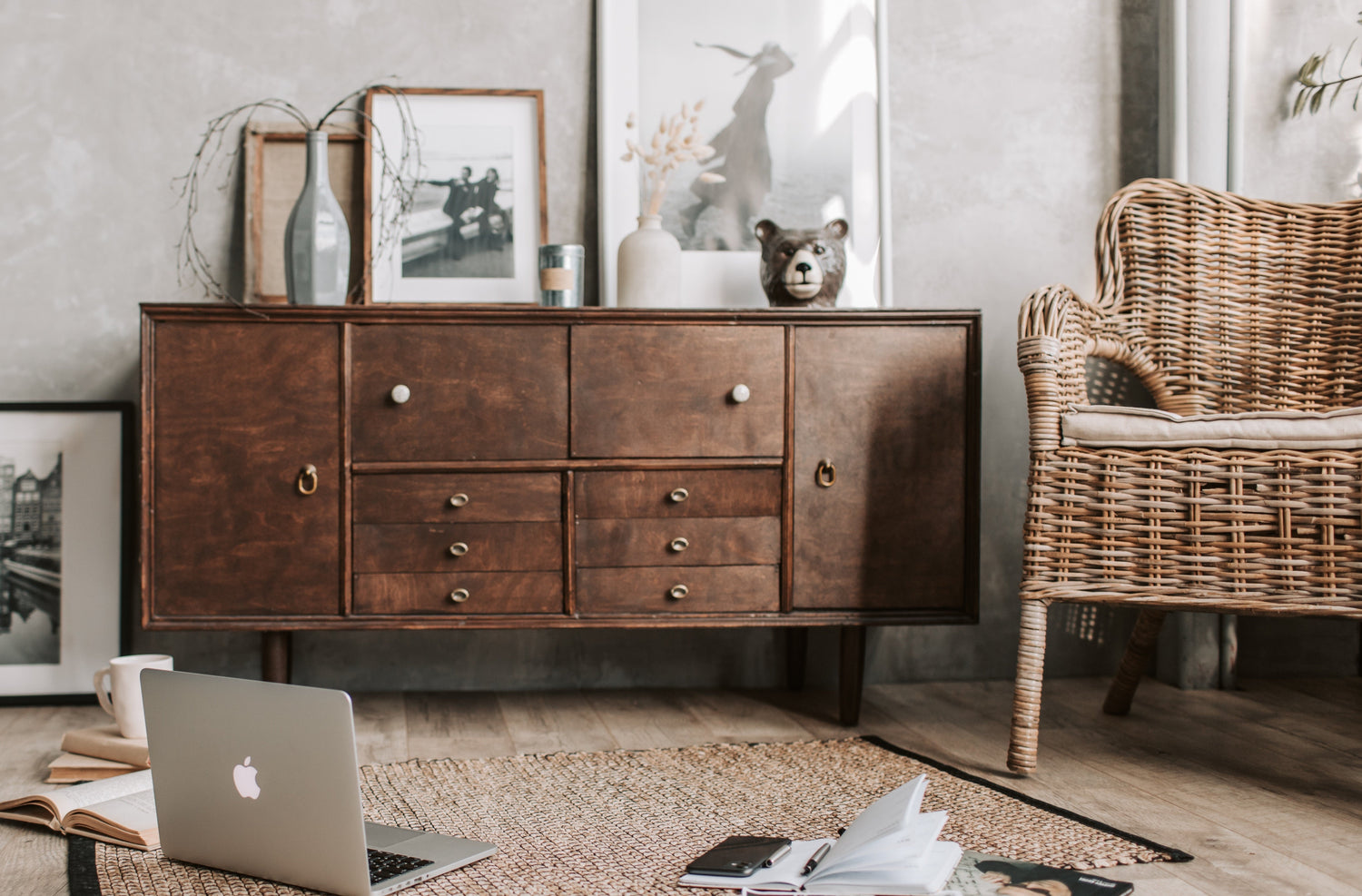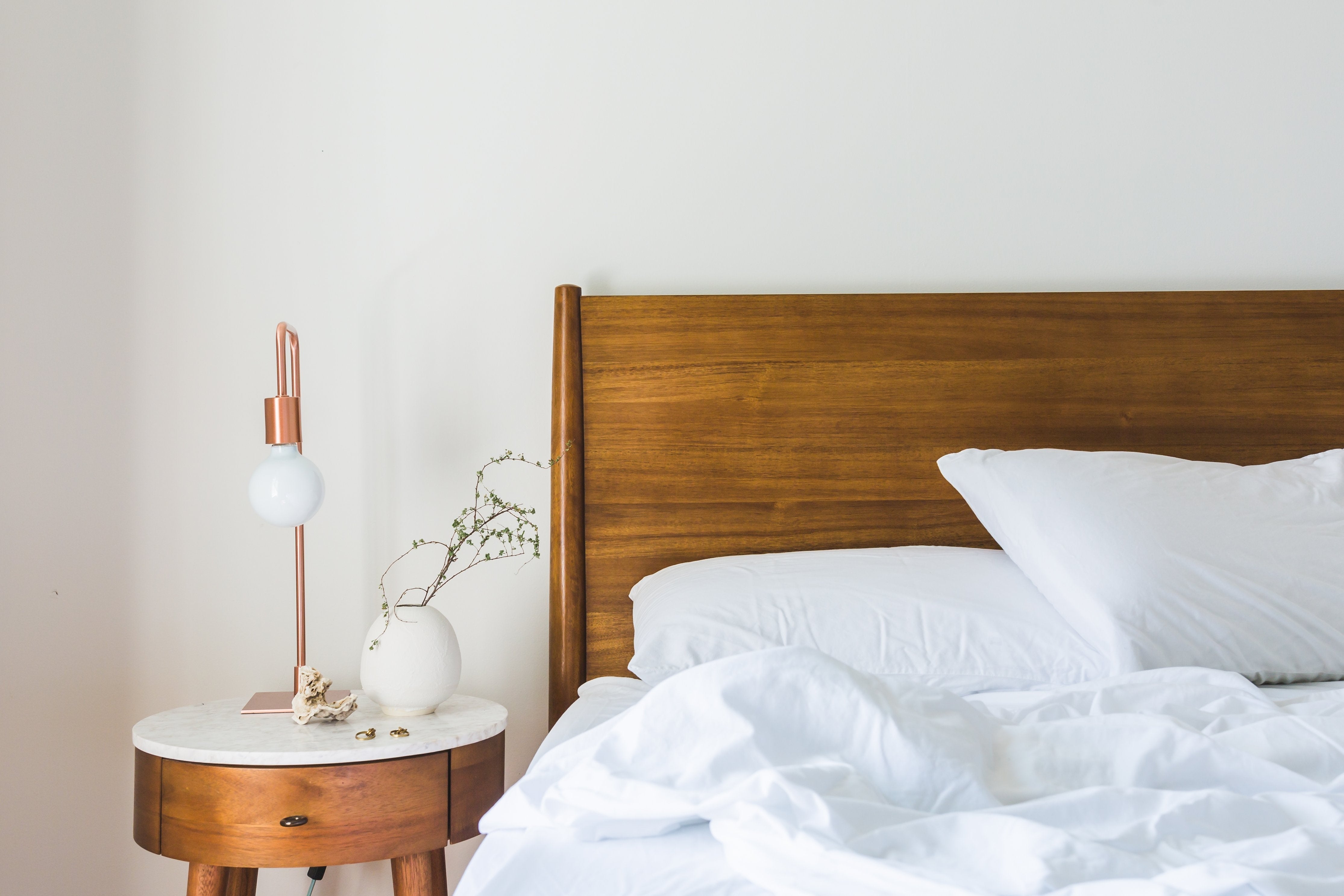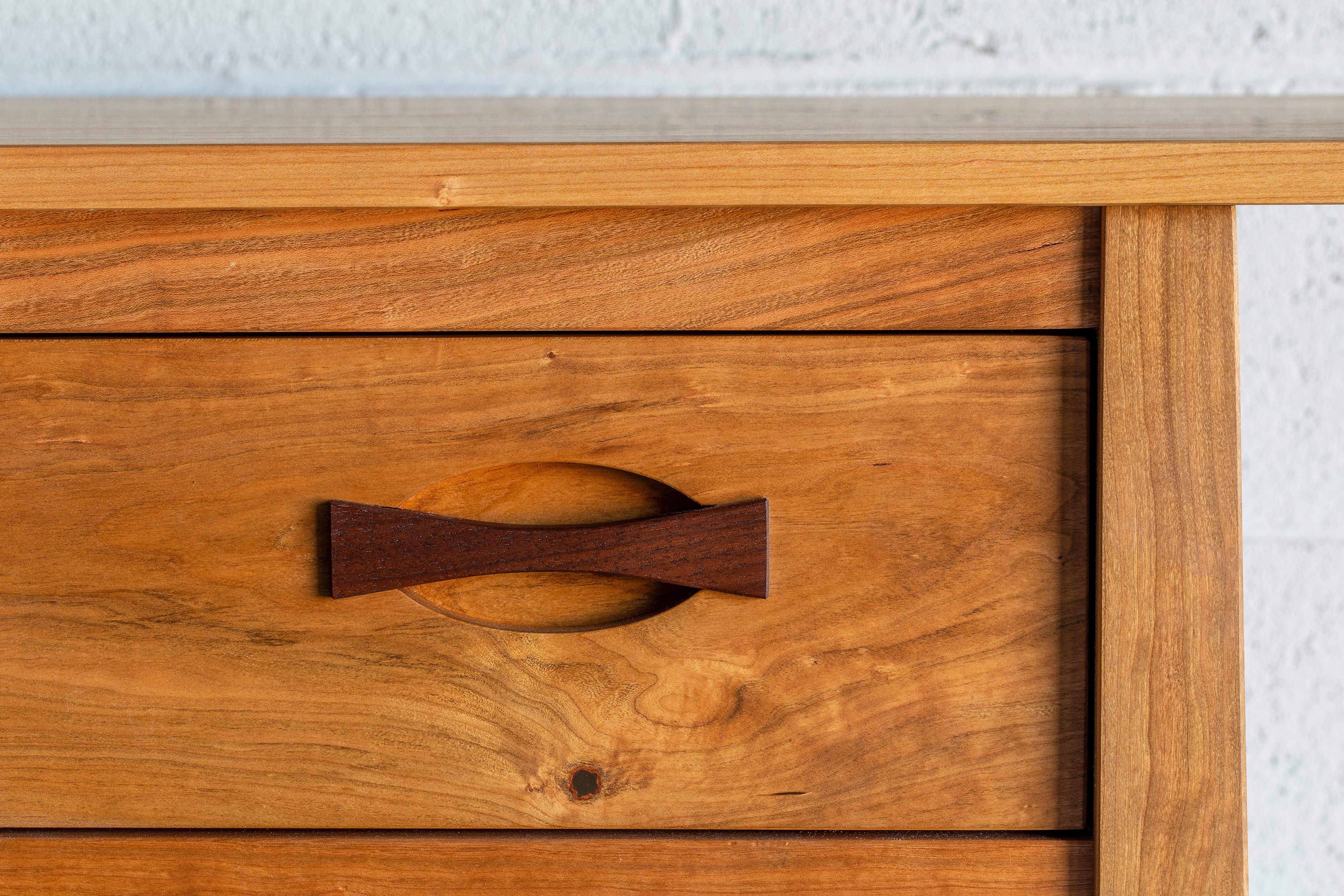When we think of wooden furniture, it's easy to assume it's naturally safe. After all, wood comes straight from the earth. But not all wooden furniture is as natural as it seems. Hidden beneath the surface are materials which may contain toxic chemicals.
What then qualifies as non-toxic furniture? Where can we find the danger in wooden furniture? Let's find out in this article.
Dissecting Common Sources of Toxins
To better understand this issue, here are three key components of wooden furniture that can make it toxic:
1. Wood Finish
Varnish, paint, stain, and other finishes are potentially harmful because they contain VOCs (Volatile Organic Compounds). These are carbon-based compounds that evaporate very easily at room temperature.
Not all VOCs are acutely dangerous. But many of them may cause gradual and chronic harm, especially those that are produced from man-made processes such fuel, paint, finishes, cleaning agents, and a plethora of our everyday products.
Things with VOCs, when brought into our home, may slowly release or off-gas, which may then affect the indoor air quality. We can actually smell strong VOCs, like those released from paint, but some are not detectable by smell. Their effect on our health depends on the level of VOCs released in the air – including the length and frequency of our exposure.
It may be hard to believe but the quality of indoor air can sometimes be poorer than that of outdoor air, which is often polluted. A significant factor contributing to this issue may be home furnishings.
2. The Wood
Most wood furniture these days is not made with actual solid wood, even when they look like it. Instead, many manufacturers use composite wood – medium-density fiberboard (MDF), plywood, and particle board – to create furniture.
Composite wood is made from wood fibers and particles (e.g. wood chips, sawdust) that are bound together by an adhesive. They are usually combined with fillers like plastic or straw and finished with veneer or laminate.
The adhesive in composite wood may contain formaldehyde, a common VOC that triggers asthma, respiratory allergies, and eye irritation, among other symptoms. Moreover, it is also a known human carcinogen that is sadly linked to cancer.
Many manufacturers use phenol-formaldehyde, a friendlier version that emits less formaldehyde and off-gases quickly. But it still does contain harmful formaldehyde, which some people choose to stay away from entirely.
3. Upholstery
The upholstery, both the padding and the fabric for furniture, may also contain toxic chemicals. Even mattresses could have them, too.
Common toxins found in upholstery, which is made from synthetic fiber and polyurethane foam padding, include flame retardants like polybrominated diphenyl ethers, formaldehyde, and other harmful VOCs.
These chemicals are associated with irritation to the eyes, nose, and throat. Sadly, they are also linked to severe issues such as kidney, liver, and central nervous system damage, even cancer.
What Is in Non-toxic Furniture?

Non-toxic furniture is made from materials and finishes that are safe for both you and the environment. It does not contain harmful chemicals, such as formaldehyde, volatile organic compounds (VOCs), or flame retardants. Instead, it typically features solid wood, natural oils, and water-based adhesives, avoiding synthetic alternatives.
Tips to Avoid Toxic Furniture
1. Make sure the wood finish is organic.
Some claim that VOCs from wood finishes dissipate in time and the furniture eventually becomes safe. But this really depends on the standard of which the furniture is made. Plus, it may take a while for the VOCs to off-gas indoors, which means exposure is still plausible. In some cases, it’s been found that off-gassing actually increases with time.
This is why we recommend that you go for furniture with zero VOC finish, often made with organic ingredients like tung oil, linseed oil, and beeswax. For wood stains, ingredients such as coffee, tea, beet, and turmeric, can color up furniture pretty well.
2. Go for natural solid wood.
We recommend solid wood furniture because it is durable and sustainable. Sometimes, people opt for composite wood furniture due to cost constraints, and we understand this.
Investing in solid wood furniture is often a more cost-effective long-term solution because it lasts longer. This means that you wouldn’t need to replace the furniture, possibly for a lifetime and even for the generations to come.
3. Choose natural upholstery.
Wool and natural latex can do well as cushion fillings. Meanwhile, organic cotton and hemp are good options for the fabric layer.
Finding out if the furniture is truly non-toxic is a little tricky. There are manufacturers that use misleading labels, so it’s not just enough to see the words “organic”, “natural”, and “solid wood”.
You also need to do a fair bit of research. Finding certifications such as GREENGUARD Gold Certification, Global Organic Latex Standard (GOLS), Global Organic Textile Standard, and OEKO-TEX Standard 100, can help.
Make T.Y. Fine Furniture an Option
Making organic furniture is part of our core philosophy and founding principles. We use our own Food-Safe, Organic Finish which we developed using age-old ingredients.
Our finish does not create a muddy color or glossy sheen like what varnish does. It seeps into the wood to protect the material and then develops into a satin sheen that emphasizes the wood’s natural beauty.
The material we use for our furniture is sustainably-sourced lumber that comes from managed forests within Ohio. We source our wood locally because we aim to limit our carbon footprint. Plus, this helps us ensure the quality of the material.
We also carry an organic brand, Naturepedic, so that our clients can buy organic mattresses, pillows, and sheets to match our solid wood bed frames. If you wish to know more about our brand, please feel free to reach out here.



Leave a comment
This site is protected by hCaptcha and the hCaptcha Privacy Policy and Terms of Service apply.